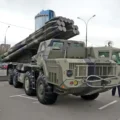
Kugisho/Jokosuka K-1 Ohka | ||
| Země | Japonsko | |
| Typ | Raketový pohon řízený člověkem | |
| První let | Říjen 1944 | |
| Postaven | 852 | |
Fotogalerie Kugisho/Jokosuka K-1 Ohka, The Yokosuka MXY-7 Ohka was a purpose-built, rocket powered human-guided anti-shipping kamikaze attack plane employed by Japan towards the end of World War II. Ohka K-1: bezmotorová cvičná verze s vodní zátěží namísto hlavice a motorů, která poskytuje pilotům zkušenosti s manipulací. 45 jich postavil Dai-Ichi Kaigun Koku Gijitsusho
| Kugisho/Yokosuka K-1 Ohka | |
|---|---|
| Fotograf | Vladimir Jakubov |
| Lokalizace | Národní muzeum námořnictva Spojených států |
| Fotografie | 26 |
| Info | |
|---|---|
| Roli | Kamikadze letadla |
| Výrobce | Yokosuka Naval Air Technický arzenál |
| První let | Říjen 1944 |
| Úvod | 1945 |
| Důchodu | 1945 |
| Vyrobené | 1944–1945 |
| Počet postavených | 852 |
Viz také:
Tá Kugisho/Jokosuka K-1 Ohka was a rocket-powered kamikaze aircraft developed by the Imperial Japanese Navy in the final stages of World War II. The name Ohka means “cherry blossom” in Japanese, and it was also known as the Baka (“fool” or “idiot”) by Allied pilots. The Ohka was designed to be carried by a bomber to the vicinity of the target, and then released to glide towards the enemy ships at high speed. The pilot would then ignite the rocket engine and accelerate to over 600 mph, crashing into the target with a 1,200 kg (2,600 lb) warhead.
Tá Ohka was intended to be a cheap and effective weapon against the Allied naval forces, especially the aircraft carriers. However, it had many drawbacks, such as its short range, its vulnerability to fighter interception, and its low accuracy. The Ohka was used in several attacks against Allied ships in 1945, but with little success. Only seven ships were hit by Ohkas, and none were sunk. The Ohka pilots also suffered heavy casualties, as more than 850 of them died in the missions. The Ohka was one of the most desperate and futile weapons of the war, and a symbol of Japan’s willingness to sacrifice its young men for a hopeless cause.
Počet zobrazení: 2361




















